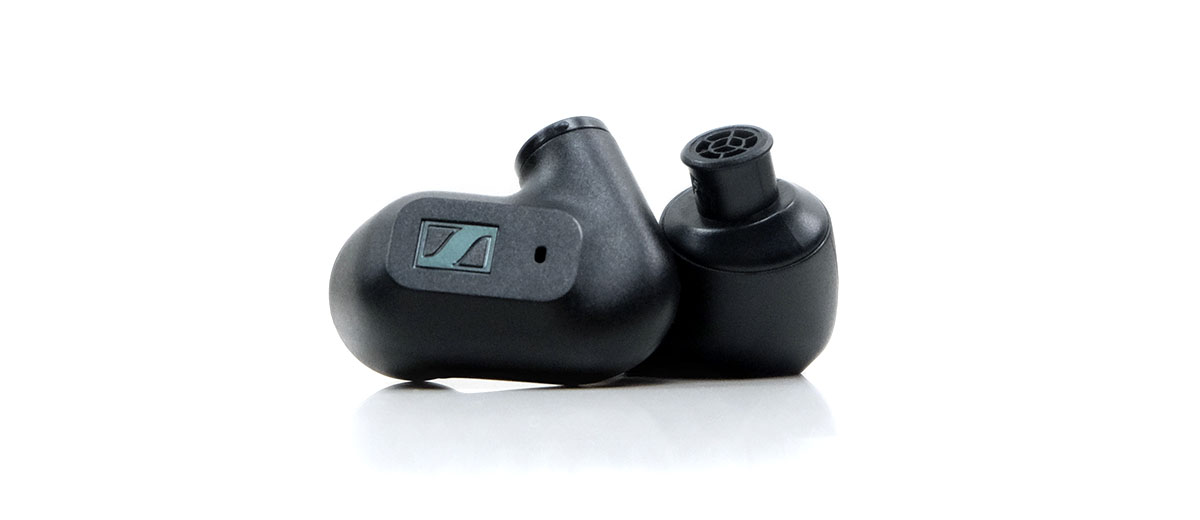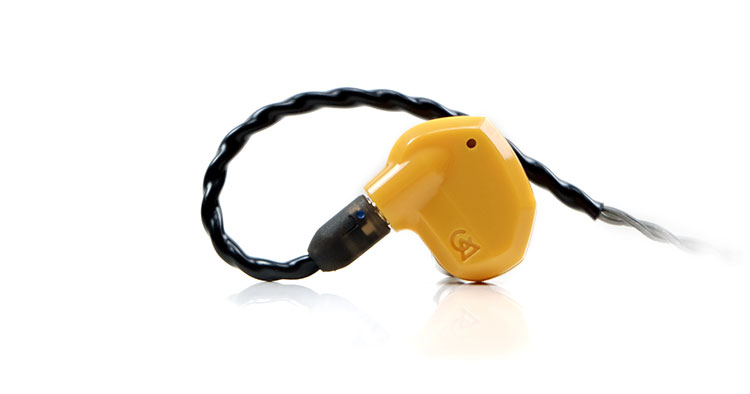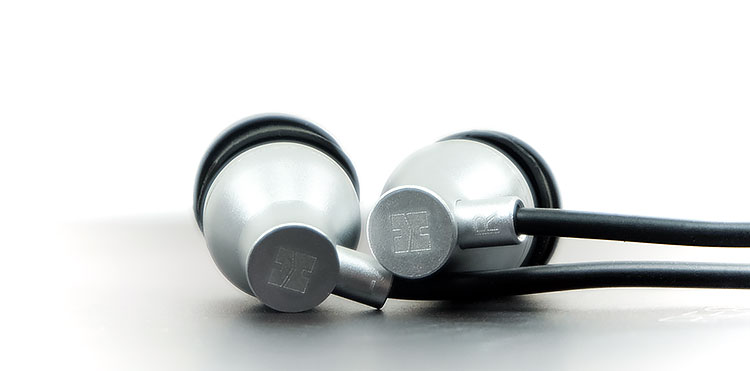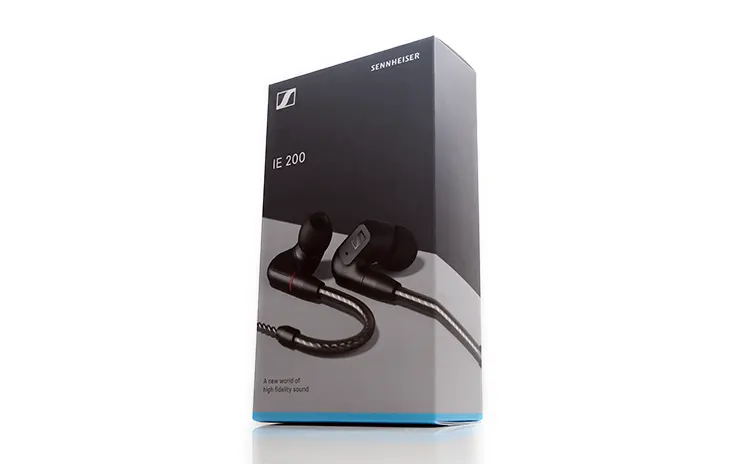Select Comparisons
The following comparisons were compiled using a mix of the Questyle M15 dongle, HiBy’s R5 Gen 2, and the Cayin N3Pro DAP. In all instances, the stock cable and tips of each IEM were used.
Campfire Audio Honeydew
$249
The Campfire Audio Honeydew was launched alongside the single BA driver Satsuma in 2021 and is CA’s entry-level dynamic driver IEM. You can read our full review of the Honeydew here.
Technical
Like the IE 200, the Campfire Honeydew is also a single dynamic driver universal in-ear monitor. As you might imagine, they differ, markedly so.
The Honeydew uses a larger custom-built 10mm driver with an LCP or liquid crystal polymer diaphragm. Whereas the IE 200 uses Sennheiser’s smaller 7mm TrueResponse driver, a similar driver to the ones used in their high-end models.
Sennheiser is less revealing on the exact implementation of the driver inside the IE 200, whereas Campfire is more forthcoming. For example, both are vented models as you would expect for dynamic driver designs but we do know the Honeydew uses a 3D-printed internal acoustic chamber and airflow system with bass venting for the LCP driver.
Efficiency comparisons are trickier due to CA’s new weighted benchmarking systems which gauges the level of Vrms required to hit a 94dB SPL level. The impedance level of both is very comparable though with the Honeydew almost on the money at 17.44Ω compared to the IE 200’s 18Ω rating.
Some subjective testing though will quickly determine which has the higher level of efficiency. With the Questyle M15 on a high gain setting the Honeydew will sound a lot louder than the IE 200 which requires more volume to match.
Design
Both the Honeydew and the IE 200 are compact little monitors but from the picture, you can clearly see they are going in very different directions in terms of aesthetics and design language.
Both use plastic shells though the Honeydew garnished the finish with a stainless steel spout that gives it a bit of a premium dash with a yellow finish.
Both IEMs also use an MMCX system with lightweight cables. However, CA uses a Beryllium / Copper composition for their connectors designed for durability, something I am not sure is used by Sennheiser.
The Honeydew form factor is deeper, but a little narrower with more of a classic IEM form factor relying more on the tip insertion depth to create a good seal. The IE 200 is flatter but wider with a shorter nozzle. However, its ability to sit closer to the concha basin does negate the need for a longer nozzle to create a decent seal.
One thing to note, they are both relatively consistent in terms of legacy design or house design features. Both are unmistakably CA and Sennheiser compared to many of their other IEMs.
Of the two, the IE 200 is the lighter though, in terms of fitting, I find the IE 200’s flatter L-shaped design to have more contact with your concha basin. Both have decent isolation but the tip styling of the Honeydew gives it a very slight edge over the stock tips on the IE 200. You can close that gap with 3rd party tips, for example, Final E.
Of course, the ace card for the IE 200 is the ability to move the stock tips up and down the nozzle to adjust the sound signature, giving it a bit more flexibility over the Honeydew.
Performance
If you want to compete with the Honeydew then you need the IE 200 foam tips in the standard position to maximize the bass response.
With the open position, it’s lean and clean sounding, and with the single flange silicone tips the bass runs quite flat for those who like a bit of heft to their low end.
The bass shelf on the Honeydew is huge compared to the IE 200. If you are after something more balanced sounding the IE 200 will serve you better. If you are after some weighty lows and a warmer timbre then the Honeydew is the correct choice.
The IE 200 is punchy and in some ways the more audiophile tuning. Despite having less weight and staging depth, it does have more clarity and less bloom. A dip from 200Hz to 500Hz drains the bloom, something which the Honeydew lacks, hence its rounded softer tone through the mids.
There is some subtle shimmer in the 5-8k range of the Honeydew which does add some necessary counter to the boom of the lows but there is a decidedly dipped 2-4k range which is the opposite of the IE 200 which has a more modern 1-4k rising curve to push vocals front and center.
As such higher register vocals have more energy and presence on the IE 200 accentuated by a little bit more treble overtone from an elevated 7k region. Percussion timbre also has the same energetic boost and forward-sounding presence.
You will hear the IE 200 as a bit more neutral in its timbre compared to the Honeydew. Not that the IE 200 is bright, in fact, it is relatively smooth sounding. Rather, the Honeydew is just so colored it will make it seem bright.
HIFIMAN RE800 (Silver)
$99
The HIFIMAN Re800 Silver was launched in late 2019 and originally priced at $599. However, you can now buy it at $99 which makes it a bit of a bargain given its performance. You can find our review of the RE800 SE here.
Technical
Both the IE 200 and RE800 are single dynamic driver IEMs and as you might have guessed both drivers have differing selling points. The RE800 Silver was one of the first HIFIMAN IEMs to use their Topology diaphragm tech, a staple now in just about every dynamic driver they use in 2023.
Basically, a Topology diaphragm is coated with a specially formed nano-particle-sized coating on the surface with distinct geometric patterns. The pitch is that these patterns can help HIFIMAN tweak the sound signature further than regular diaphragms as well as reduce distortion and vibration across the diaphragm.
The IE 200 is less revealing other than it uses Sennheiser’s 7mm TrueResponse driver, a transducer drawn from their flagship IE 900 and IE 600 so we know it can perform very well indeed.
one thing that does stand out is the impedance load of the RE800 Silver at a whopping 60Ω and 105dB SPL @1kHz compared to the IE 200’s 18Ω and 119dB (1kHz, 1Vrms) rating.
You will need good voltage from your source to properly drive the RE800 but having said that the IE 200 isn’t as efficient as the stats might lead you to believe. A subjective test of both using the Cayin N3PRO DAP in a low-gain solid-state timbre mode didn’t reveal a huge amount of loudness difference between them.
Design
If you think the IE 200 is petite wait until you get a load of the RE800. They are about half the size with a very traditional quasi-bullet type form factor meaning it’s narrow and tubular rather than L-shaped or a more modern quasi-custom molded design.
The weight is perhaps even lighter per driver side than the IE 200 but the official weight is 27g due to the fact the cable is not detachable on the RE800. That is the downside of the HIFIMAN IEMs compared to the MMCX detachable cable design of the IE 200.
You can upgrade your cable experience with the IE 200, for example, go balanced, but you are stuck with a rubbery 3.5mm SE cable on the RE800. Mind you, at $99, I do not think it is such a huge deal but for $51 more to get detachable it might be for those pondering between both.
Comfort is excellent for both but the IE 200 does cover your canal better given its larger size. That makes a difference because the RE800’s super small form factor makes it very tip dependent.
To HIFIMAN’s credit, you get tons of single, dual, and triple flange tips with them that offer variable levels of comfort and seal as well as small tuning differences. The IE 200 only comes with two types, foam, and single-flange silicone but they have a purpose in terms of tuning and nozzle placement.
Performance
The RE800 Silver is a cleaner airier sounding monitor with a stronger treble presence and overtone through the timbre though not quite a sizzler. There is enough control on it to sound more neutral in part especially if you fit them with foam tips.
The IE 200 with the foam tips is fuller and richer sounding. It has a more powerful sub-to-mid-bass response, a comparatively elevated vocal region up to 3k that brings most voices more into focus, and less treble overtone so it’s the smoother sounding of the two with less brilliance coming through.
I would argue the IE 200 is not as airy in either the open or standard position and combined with the silicone single flange tips the open position is leaner sounding. I do prefer the more natural smoother sound of the standard position with foam tips and it’s here I think the IE 200 has the edge for most casual listening over the RE800.
One curious thing about the RE800 is that it does have some nicely elevated lower mids that do mask a bit of roll-off in the sub-bass giving lower register instruments a bit more focus. However, it does dip from 1-2k compared to the rise of the IE 200 and can be hollower-sounding in this region as a result.
Higher register vocals and percussion presence on the RE800 do come through clearly and do benefit from a nice 3-4k lift similar to the IE 200.
However, it’s really the 5-8k region of the RE800 that dominates and casts a strong influence over the resulting instrumental timbre. The sparkle, staging height, and perceived articulation are thus good though lacking in weight and body elsewhere compared to the more planted-sounding IE 200.
Flare Audio E-Prototype
£249.95
Going a shade above the IE 200 in terms of price is the Flare Audio E-Prototype. The UK company launched the E-Prototype back in early 2022 as a ‘proof of concept’ but sold quite well. You can find our full review of the E-Prototype here.
Technical
The E-Prototype is another single dynamic driver IEM but slightly larger at 10mm as opposed to the 7mm TrueResponse driver inside the IE 200.
It uses Flare Audio’s patent-pending Mirror Image Sound™ technology though in our review we referred to USQ technology also which may well have been a precursor working title for the same thing.
Basically, the focus is more on the acoustical space and internal design than the actual driver itself with the aim of reducing the distortion created when the sound wave or signal hits the ear or goes through the acoustical chamber of the IEM. The driver itself seems to be of secondary concern though obviously must be of a suitable quality to bare their name.
Specs are not easily available but I have seen E-prototype numbers cited at around 35-37Ω with an SPL of about 100-101dB/mW. That would make it a medium efficiency level driver compared to the IE 200’s load of 18Ω and 119dB (1kHz, 1Vrms).
Going back to the Cayin N3PRO for some subjective volume level and load testing in a low gain solid state mode I would contend that the performance would not reflect those cited numbers because it is a lot more sensitive than the IE 200.
Either that or the IE 200 numbers are very conservative or a different weighting was used to achieve both IEM’s cited ratings. Either way, you will not need as much volume to drive the E-Prototype compared to the IE 200.
Design
No question that the IE 200 is the more professionally finished IEM but then again, I do not think Flare Audio would quibble with that since the E-Prototype is just that, a proof of concept.
This is a 3D-printed housing made of PLA resin which is also a non-moisture-resistant resin so there have been issues with some customers housing crumbling so to speak. The one I have here has stood the test of time though I am in an air-conditioned room which reduces the humidity a lot.
It’s nothing like the compact polished L-shaped design of the IE 200 which is small, lighter, and sits flush in your ear. There is a bit of a sweet spot hunt for the best positioning of the E-Prototype and it sticks out of the ear and then some.
Having said that the isolation is very good, on par with the IE 200 at least and you can wear them over the ear or straight down. Considering the cable has no memory wire and is non-detachable I actually found straight down to be equally as enjoyable with the E-prototype.
The cable on the E-Prototype is Kevlar finished and fairly robust and I never had a concern it would ever die on me.
Of course, non-detachable means you are stuck with one wire in single-ended mode. The IE 200 can detach with its MMCX connectors meaning you can upgrade and go balanced if needed which is a big plus.
Performance
The Flare Audio E-Prototype is an absolute bass cannon and comfortable the deepest and most powerful sounding dynamic driver among the 4 IEMs covered in this review. You can place whatever tip you like in whatever position on the IE 200 and will not come close to generating the same low-end extension and power as the E-Prototype.
However, the IE 200 sounds more balanced in its tuning beyond the bass to the extent that the E-Prototype has almost too much bias on the lows giving the rest of the range a warmer and darker-sounding performance.
The IE 200 is clearer through the mids and highs, offering a bit more sparkle and treble presence. It can be punchier compared to the E-Prototype which peaks at 20-50Hz and gradually descends into the mids with some elevation in the 2-4k range and a relatively smooth treble tuning but not one blessed with high energy.
From the mids upwards I would take the IE 200 with its cleaner vocal and snappier percussion performances positioned just above the bass levels so they will never be drowned out if the low-end gets very energetic.
Staging-wise, the E-Protype has excellent depth and vocal positioning, at least for female vocals, that can sound forward and not at all recessed. The width at times can be impressive, though it can feel a bit compressed at the very upper octaves with a lack of sparkle giving midrange instruments that warmish hue.
The IE 200 will sound comparatively shallower but more open sounding in the mids and airier and brighter through the highs. With less upper-bass bloom overshadowing it and a bit more treble presence you get more space for vocals and percussion timbre to stand out.
Our Verdict
I think Sennheiser has done a sterling job with the IE 200 in terms of what it brings to this very competitive price point in the portable audio world.
You get a slice of their higher-end models with a pleasingly balanced sound signature combined with clever tuning flexibility via a dual-tip positioning system. A system that can leave it sounding clean and bright or smooth and more natural to the ear.
It is not perfect, of course. The open position is a bit too lean for my liking and the on the physical side I do wish the markings on the cable connectors were a bit easier to see. The shallow insertion depth will mean a more studied session in the best tip matching also but you should get there eventually.
One final note, the IE 200 is power-friendly but not as efficient as you may think. However, with most DAPs and decent dongles, it is responsive to quality power. If you can find a balanced cable for it that works it gets even more competitive.
Sennheiser IE 200 Specifications
- Transducer principle: dynamic
- Transducer size: 7mm
- Weight: 4 grams
- Frequency response: 6 – 20,000Hz
- Impedance: 18 Ω
- Sound pressure level (SPL): 119dB (1kHz, 1Vrms)
- Total harmonic distortion (THD): <0.08 %






